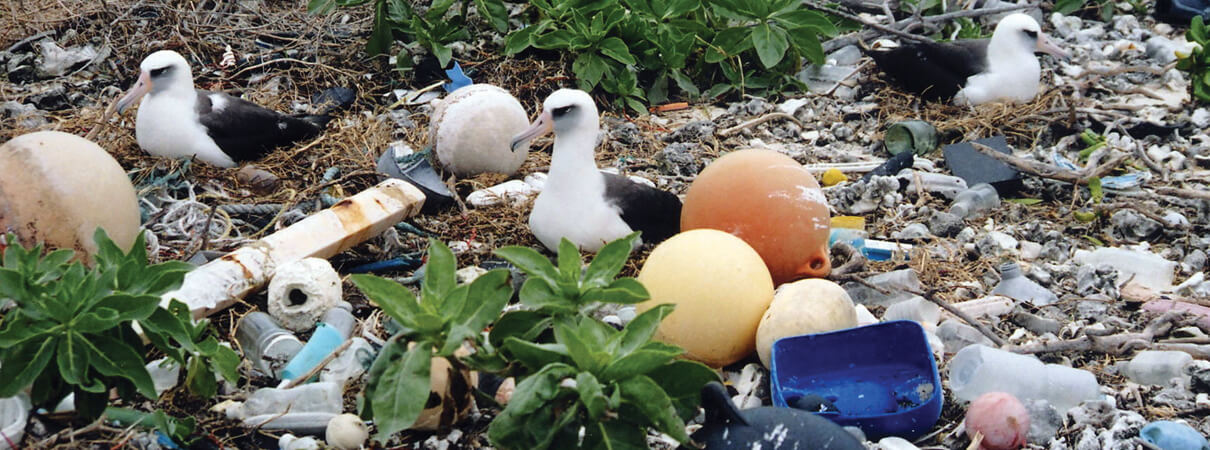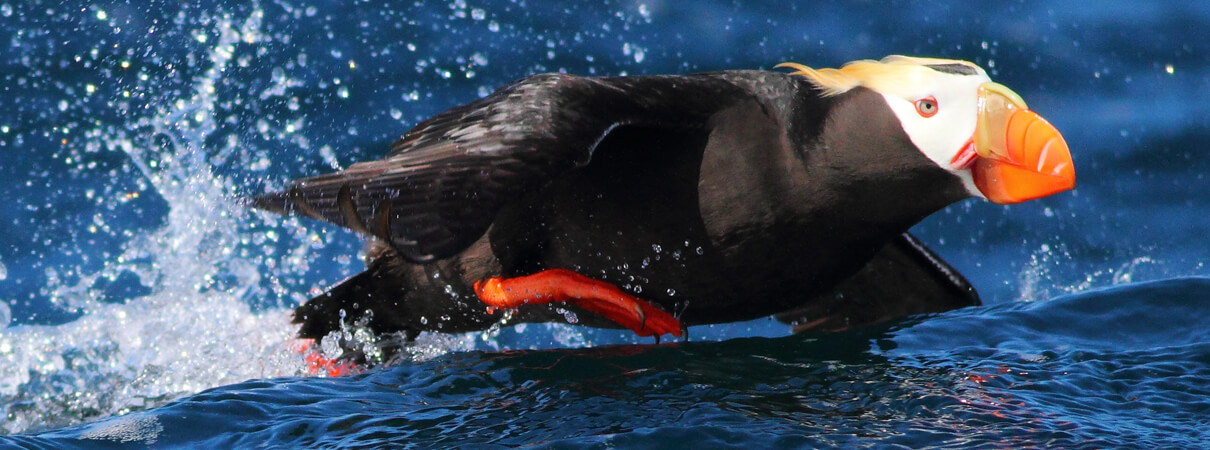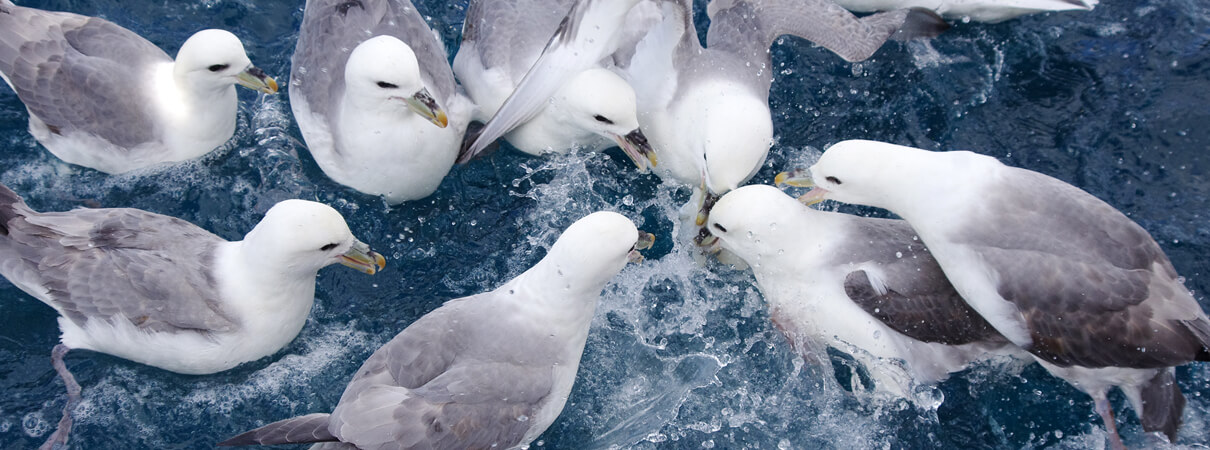Plastics Pose an Enduring Threat To Seabirds
Whether it's the largest species of albatross swallowing discarded toothbrushes or the smallest phalarope with a grain of plastic in its gizzard, no seabird is immune to the enormous amount of plastic debris in the world's oceans. Seabirds in the most remote places on earth are affected: Laysan Albatross nesting islands in the middle of the North Pacific Ocean, Easter Island in the South Pacific, South Georgia in the South Atlantic, to name a few.
A recent global review combining ecological surveys, oceanographic conditions, and models suggests that the threat of plastic ingestion to over 180 seabird species is rapidly increasing. “Within my lifetime, plastic in the ocean has grown from an incidental observation to a global phenomenon," says Hannah Nevins, ABC's Seabird Program Director. "While the population-level impacts are scientifically difficult to demonstrate, we know without a doubt that plastics cause harm to seabirds and other marine wildlife."
Q: How pervasive a threat is plastics to seabirds?
A: Scientists have found plastic garbage lining birds' nests on remote islands and choking the stomachs of seabirds fishing in the middle of the Pacific, thousands of miles from land. The worst offenders are items people use every day – plastic stir-sticks, straws, plastic bottles and caps, Styrofoam coffee cups, and cigarette lighters and butts. Discarded fishery gear (lines, rope, broken traps), six-pack ring holders, and party balloons also have devastating effects on marine birds.
It's not just the tangible remnants of plastic items that cause problems. As plastic breaks down in the ocean, it releases damaging chemicals that may attract seabirds. Worse, degrading plastics release damaging chemicals such as such as polychlorinated biphenyls (PCBs) and dioxins from the ocean water. Many plastics used in common items such as shopping bags and water bottles absorb large amounts of chemicals. As they degrade into smaller bits they often become virtually invisible, but are still toxic to the birds, fish, and sea turtles that unknowingly ingest them.

Laysan Albatrosses nesting amidst plastic debris washed up on Midway Atoll. Photo by Steven Siegel, Marine-Photobank
Q: Why do some birds eat plastic?
A: Many seabirds mistake floating plastic debris for prey. Albatross, for instance, often mistake plastic items for squid, one of their main foods. Albatross also eat flying fish eggs, which are laid on floating debris; the hungry birds sometimes gobble up the plastic along with the fish eggs.
Although surface-feeding birds such as albatross, shearwaters, and petrels are more likely to eat plastic than diving birds such as murres or gannets, recent studies indicate the number of bird species that mistakenly eat plastic is growing. Even in the remote waters of Alaska, iconic diving species such as the Tufted Puffin have been found with plastic in their stomachs.
Some birds also use plastic materials to line their nests. Researchers studying a colony of Northern Gannets estimated that the birds used 18 tons of plastic for nesting material, particularly synthetic rope. On a recent survey of remote Molokai Island, we saw Black Noddy nesting in caves constructed of marine debris – bits of fishing line, nests and rope.

Even diving seabirds such as Tufted Puffin have been found with plastic in their stomachs. Photo by Greg R. Homel, Natural Elements Productions
Q: Where do the plastics come from?
A: The garbage patches of the world's oceans – vast areas of accumulated floating debris — are a legacy of years of wasteful consumption and careless disposal of trash. Although some countries have good waste-management systems, others see the ocean as the “away” place, and continue to dispose of plastics and other trash there.
Q: What can people do to reduce marine debris?
A: There are actions people can take every day to help keep plastics and other debris out of our oceans.
Volunteer for beach and stream clean-ups. During the International Coastal Clean-up Day (September 15th) and other events can galvanize local communities to remove litter in waterways and beaches, and ultimately protect marine birds, mammals, and sea turtles. Find out more here.
Reduce consumption of single-use, disposable plastic products. Whenever possible, reuse and recycle. Buy reusable grocery bags to cut down on plastic bag use. New resources on alternative and less environmentally damaging materials are available such as compostable materials. Find out more here.
Determine your “plastic footprint.” How much plastic waste do you buy and dispose of in a week, a year, a lifetime? Then take steps to change your consumer choices to reduce the amount of plastic in your life. How best can you can make a personal commitment to reducing plastic use?
Educate others about the dangers of marine debris. Many people don't realize how much plastic ends up in the ocean. Talk to your friends, family, and colleagues about the impact of plastic on seabirds, turtles, and marine mammals. Talk to students and teachers about albatross with free lesson plans. Host a zero-waste event. Check out these resources for plastic-free public events and schools.
Talk to your elected officials to create incentives for local waste management. In some communities, changes at the local level in municipal waste-management practices have led to bans on plastic bags and/or Styrofoam, which frequently end up in the ocean.
One example: Assembly Bill 319 (Stone-California) would require all single-use plastic beverage containers, such as bottled waters and sodas, to have a tethered cap by 2020. Tethered caps stay attached to the plastic bottles, helping ensure that all of the plastic — both the bottle and the cap — go to the recycler.

Northern Fulmar feeding scrum. Photo by Marit Zirna, Shutterstock
Q: Has there been any progress in cleaning up plastic pollution and keeping more plastic waste out of the oceans?
A: Yes, definitely. The silver lining to this serious problem is that people are becoming much more aware of how their actions — the straw in their iced coffee, or the plastic bags they use to carry home a load of groceries – are affecting marine animals. It used to be that if trash was out of sight, it was also out of mind. That does seem to be changing.
According to research done in Australia, for instance, anti-litter campaigns that encourage people to be better stewards of the environment are far more effective than local or national policies. When people are inspired to take action, they have a greater stake in seeing the long-term outcome, and stay committed to it. The study also found that the more communities invested in waste management, the less marine litter they generated. The ultimate result is that coastal waterways and beaches are cleaner, allowing birds and coastal economies to thrive.
 | Hannah Nevins is ABC's Seabird Program Director. She has nearly 20 years of seabird conservation experience, ranging from the clearing of non-native rats on nesting islands to assessing impacts of gill nets. |


















































